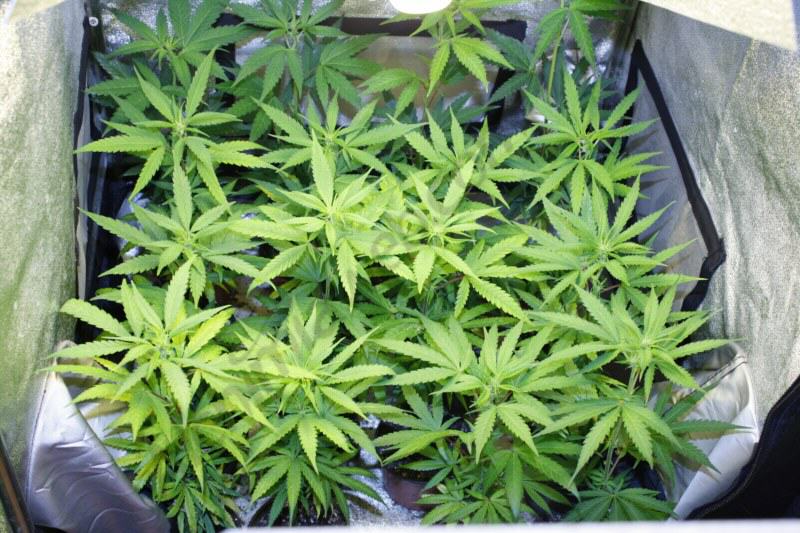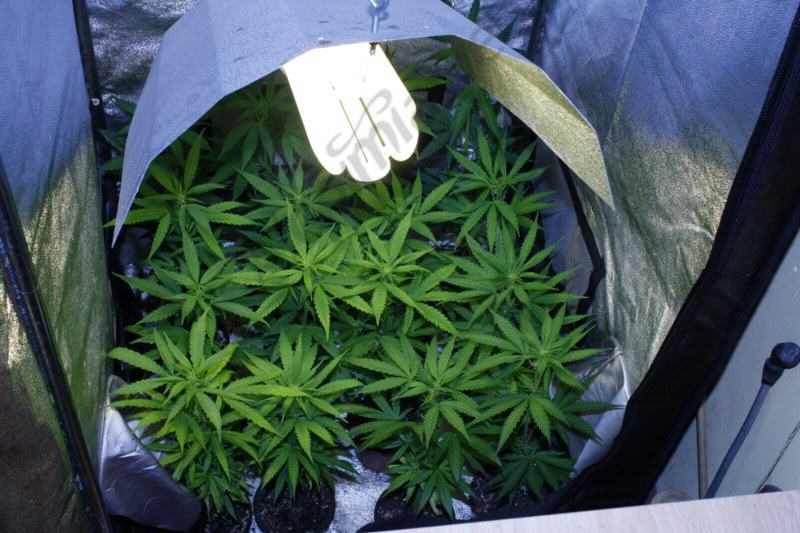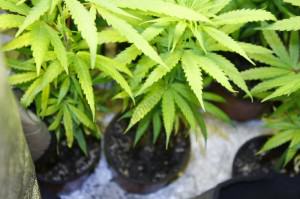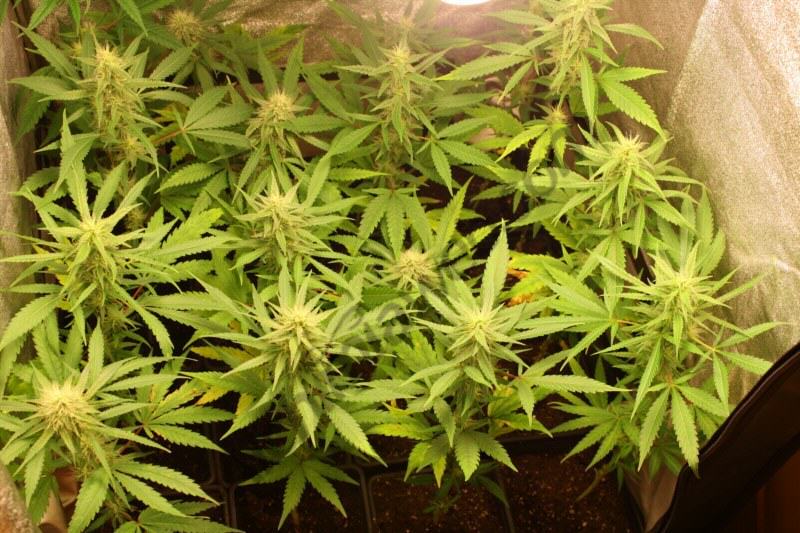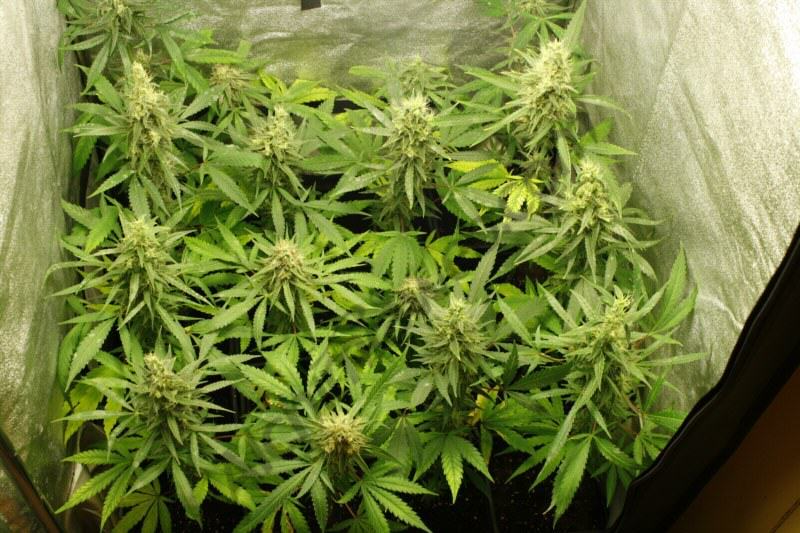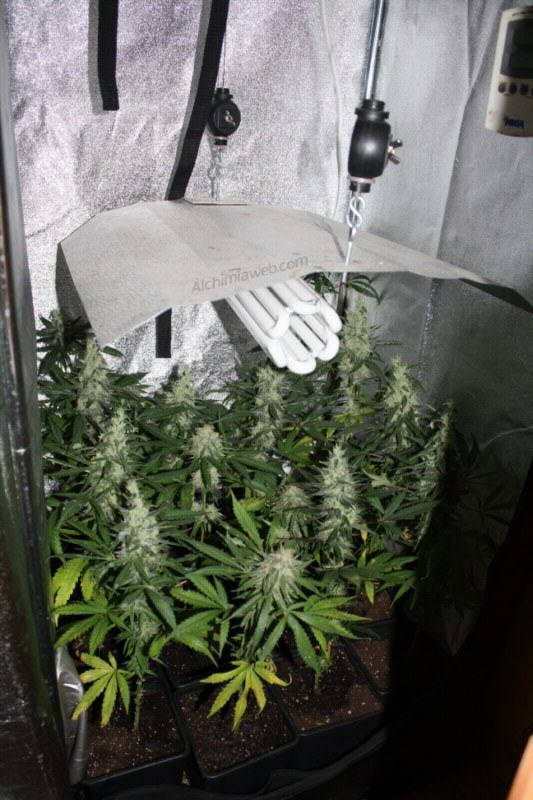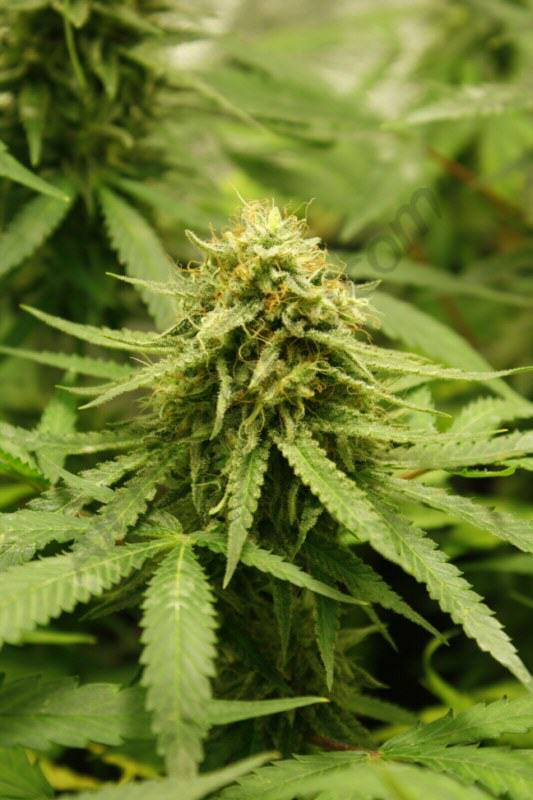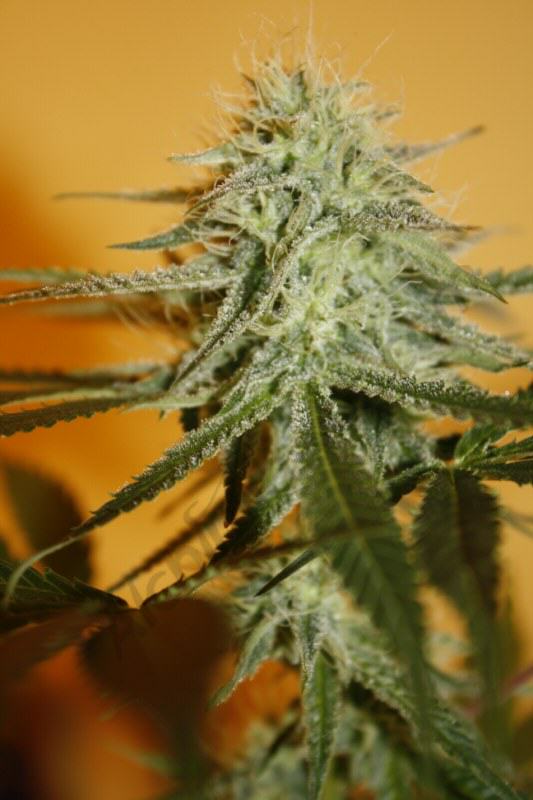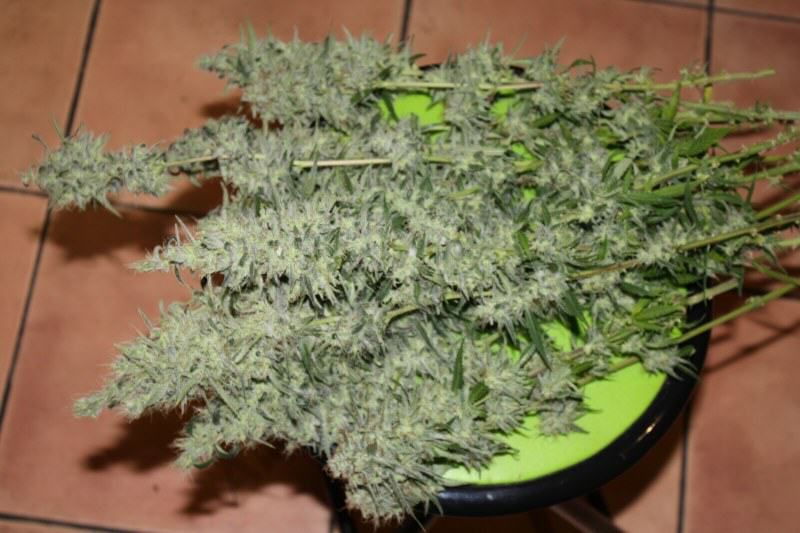Hey everyone,
A little off topic but this is a must read. The post is from Alchimia grow shop.
Growing marijuana with energy saving lamps
We started this crop for this post in order to show you if
growing marijuana with energy saving bulbs is possible. In fact, we were aware of the possibilities of this type of lighting used in the flowering phase from the experience of our customers and friends, who had told us about using CFL lamps for the entire cycle of the plants. Our goal was, then, to prove it and experience first hand this type of growing.
K13 Haze plants under energy saving lamps
Materials used to grow marijuana with energy saving lamps:
Marijuana grown with a 200 W energy saving bulb
Growing marijuana step by step
Once the cuttings rooted in the jiffy pellets, we transplanted them into 0.25 litre pots that were placed in the
grow tent , where the pants were expected to flower. The aim was to grow a lot of plants that should remain very small in order to maximize the 45/50,000 lumens of the bulb, at a distance of 10 cm from the plants. This drops to 15,000 when the distance is over 30 cm.
K13 Haze right before being transplanted
We switched the photoperiod to flower, using small pots with the aim to get plants that were as short as possible. After 15 days into flowering, all plants were between 20 and 30 cm in height and had started developing flower buds, so we made sure that they wouldn’t grow taller even if they were to be transplanted. This would tell us when to transplant the plants into 2.5 litre pots. Right at that moment, our plants showed symptoms of a nutrient deficiency, which was a clear sign to transplant them.
A few days after the transplant, all plants showed a clear recovery and leaves became dark green. After the transplant, the plants were fertilised with Bio Flores and Bio Boost once a week, while the everyday irrigation was performed using tap water at ph=6.
The plants continue to grow normally
A few weeks later, the
buds were getting bigger in the same way as they would have done with a high pressure sodium light bulb, avoiding the issues that these types of bulbs have on climate management.
Seventh week of flowering
The plants were flowering normally except in the last ten days, when a failure in the ventilation system timmer (it stayed off for 10 days) led to a small attackk of powdery mildew, which was appropriately treated with an organic anti-mildew solution called
Oidioprot .
K13 Haze at the end of its flowering stage
Energy-saving crop right before being harvested
Nine weeks after the start of the flowering period it was harvest time. The overall yield was
110 grams of high quality buds. Some of these flowers had even greater organoleptic properties (taste and aroma) than plants grown with sodium lamps, mainly due to the
lower stress experienced by the plants grown with CFL if compared to sodium lamps. Temperatures with energy saving lights are really very low, and they also have an impact on
relative humidity, which is
quite constant.
Bud grown under CFL lamp
Buds ready for trimming
Conclusions of marijuana grown with energy-saving bulbs
- It is totally feasible to grow flowering plants with energy saving bulbs.
- Climate managing with these lights is much easier.
- Due to the absence of a strong hot source in the growing space, the smell is less intense and the organoleptic properties of the final product improve.
- Because of lower temperatures, and since there is almost no evaporation, the irrigation needs of plants are drastically reduced.
- Because the really usable area when growing with these lights is the nearest 30/40 cm from the bulb, we must use pruning and cropping techniques that allow us to fully exploit this area, achieving best yields. It is therefore necessary to either grow very small plants or grow them using the SCROG technique.
- The buds grown using this system do not lose strength, density or weight. They are pretty similar to those grown under HPS bulbs. Actually, as mentioned before, they could be even better regarding aroma and taste.
- Using these bulbs without keeping in mind their special features will certainly end up in failure and give us a wrong idea of the possibilities of this lamps.
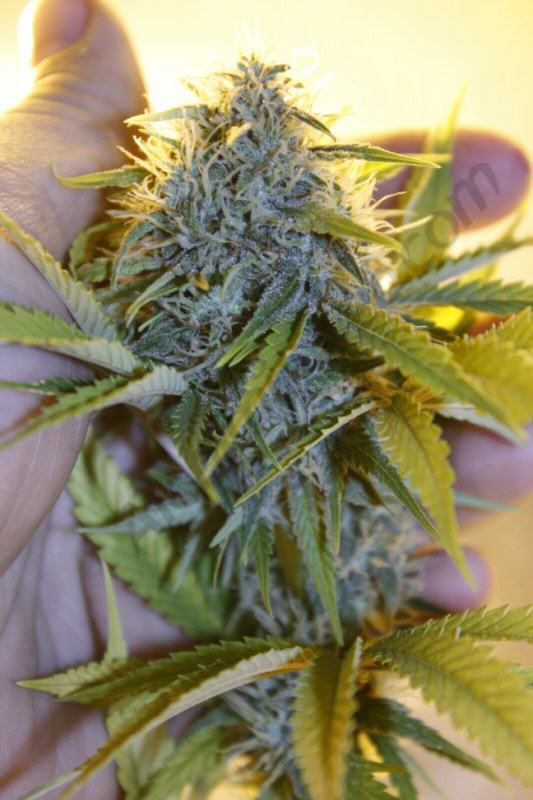
Close-up view of one of the best buds of this crop
Peace CFL' ers,
Sherman420

 I did something today before I read your post, but based on your previous post and that was making my nute mixture thicker. I've been so afraid of burning them that I was making it waaaay too diluted, and THEN added ph'd water afterwards just in case, but it was causing my plants to grow really slowly. When I made my nute mixture with a higher dose of stuff and didn't follow with water, I actually saw a difference in my plants. Check it out in my journal, I just posted some new pics.
I did something today before I read your post, but based on your previous post and that was making my nute mixture thicker. I've been so afraid of burning them that I was making it waaaay too diluted, and THEN added ph'd water afterwards just in case, but it was causing my plants to grow really slowly. When I made my nute mixture with a higher dose of stuff and didn't follow with water, I actually saw a difference in my plants. Check it out in my journal, I just posted some new pics. 



 Being my first grow, I have no idea what yield will be when it dries, but I'm thinking maybe an oz to 1.5? If the 3 sour diesels can average that, too, I'll be very pleased. Was hoping for 4 ozs total from the 4 plants, and I might be in that 4-6 range, when all is said and done.
Being my first grow, I have no idea what yield will be when it dries, but I'm thinking maybe an oz to 1.5? If the 3 sour diesels can average that, too, I'll be very pleased. Was hoping for 4 ozs total from the 4 plants, and I might be in that 4-6 range, when all is said and done.